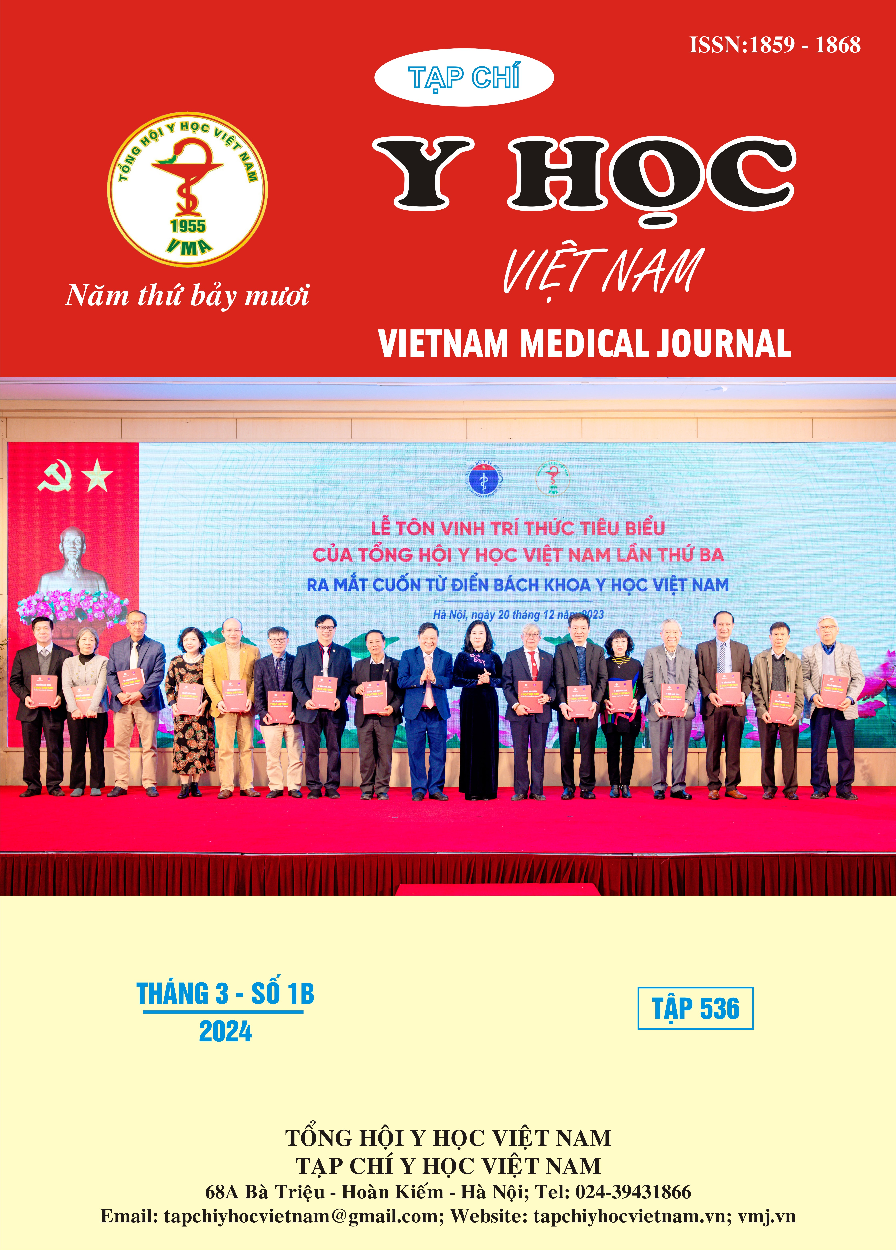CHARACTERISTICS OF CORONARY ARTERY LESION ON CORONARY COMPUTED TOMOGRAPHY ANGIOGRAPHY IN PATIENTS WITH TYPE 2 DIABETES
Main Article Content
Abstract
Objective: The study aimed to describe the image characteristics and incidence of coronary artery lesions on coronary computed tomography angiography in patients with type 2 diabetes and explore the relationship between lesion characteristics coronary artery with some type 2 diabetic patient characteristics. Methods: This is a retrospective, cross-sectional study. All patients underwent coronary computed tomography angiography at Thong Nhat Hospital, Ho Chi Minh City from September 2022 to September 2023. Results: There were 294 patients who underwent coronary CT angiography, including 147 patients with type 2 diabetes (92 men, accounting for 62.6%, 55 women, accounting for 37.4%) and 147 patients without diabetes (including 93, males accounted for 63.3% and 54 females accounted for 36.7%). The mean age of the non-diabetic group was 61.7 ± 10.5, significatively lower than the mean age of the diabetic group which was 68.4 ± 8.9 (p < 0.001). The non-diabetic group had less coronary artery damage and the number of damaged branches was also statistically significant compared to the diabetic group (p=0.002). The rate of significant narrowing of coronary artery branches: anterior descending artery (LAD), Left circumflex artery (LCX), right coronary artery (RCA) (narrowing ≥50%) in the non-diabetic group was statistically significantly lower than the diabetic group. except for the left main artery (LM). Among coronary artery branches narrowed > 50%, LAD stenosis contributed for the highest rate, in the diabetic group (41.5%) and the non-diabetic group (27.2%). The Agatston calcification score in the diabetic group was 234.9±395.8, higher than the non-diabetic group (106.7±334.2). The calcification score in the coronary branches in the diabetic group were statistically significantly higher than the non-diabetic group (p<0.001). The area under the curve (AUC) for the calcification score in predicting ≥50% coronary stenosis is 0,839, with a cut-off threshold of 88 points, with the highest sensitivity and specificity in diagnosis of 74,3% and 79,5%, respectively. Only the duration of diabetes is related to coronary artery stenosis (r = 0, 38). Conclusion: coronary CT angiography plays an important role in detecting coronary calcification, predicting the level of coronary artery stenosis and diagnosing coronary artery stenosis, especially in diabetic patients.
Article Details
References
2. Azour L, Kadoch MA, Ward TJ, Eber CD, Jacobi AH. Estimation of cardiovascular risk on routine chest CT: Ordinal coronary artery calcium scoring as an accurate predictor of Agatston score ranges. J Cardiovasc Comput Tomogr. 2017;11(1):8-15.
3. Caroline S Fox LS, Ralph B D'Agostino Sr, Peter W F Wilson; Framingham Heart Study. The significant effect of diabetes duration on coronary heart disease mortality: the Framingham Heart Study. Diabetes Care. 2004;27(3):704-8.
4. Han D, Venuraju SM, McElhinney PA, Lin A, Tamarappoo BK, Berman DS, et al. 520 Predictors Of Coronary Atherosclerotic Plaque Progression Assessed By Serial Coronary Ct Angiography In Patients With Diabetes: From Proceed Study. Journal of Cardiovascular Computed Tomography. 2022.
5. Joris D van Dijk MSS, Jan Paul Ottervanger et al. Coronary artery calcification detection with invasive coronary angiography in comparison with unenhanced computed tomography. Coron Artery Dis. 2017;28(3):246-52.
6. Kang SH, Park GM, Lee SW, Yun SC, Kim YH, Cho YR, et al. Long-Term Prognostic Value of Coronary CT Angiography in Asymptomatic Type 2 Diabetes Mellitus. JACC Cardiovasc Imaging. 2016;9(11):1292-300.
7. Maffei E, Seitun S, Nieman K, Martini C, Guaricci AI, Tedeschi C, et al. Assessment of coronary artery disease and calcified coronary plaque burden by computed tomography in patients with and without diabetes mellitus. Eur Radiol. 2011;21(5):944-53.
8. Nguyễn Đình Minh, Nguyễn Thanh Vân, Lê Thanh Dũng. Điểm vôi hoá và mức độ hẹp mạch vành trên cắt lớp vi tính 256 dãy. Tạp chí Y Học Việt Nam. 2021;498(2):134-7.
9. Phạm Mạnh Hùng LTY, Nguyễn Lân Hiếu Đặc điểm tổn thương động mạch vành trên chụp mạch ở bệnh nhân ĐTĐ. Tạp chí TMH Việt Nam. (2003);34:pp.18-23.


